I sat atop an overbuilt picnic table in the damp shade of a large pine tree watching one angler after another fish the water beside me. Like a slow and silent time-lapse parade, over the span of an hour, the next fisherman took the position of the one before him, casting to the same water at the same angles — interchangeable, carbon copy approaches.
It was Sulphur season in central Pennsylvania, and instead of participating, I was watching the action at Fisherman’s Paradise on Spring Creek. A few weeks removed from surgery (two herniated discs), I was strung up in a neck brace and just thankful to be alive and recovering, outside again and close to my home waters.
The Paradise is a well-named stretch of river with catch and release regulations over the densest population of wild brown trout in the state. It’s a perfectly underdeveloped community park with a ten-yard swath of prime trout water unfolding through it for a half mile. The banks are manicured in all the right places and wading is (mercifully) not permitted.
From my seat on the table, I could easily picture myself casting to the same lies from the same angles as the other fishermen— because I had. In fact, I had thrown flies at those fish hundreds of times, and yet, I’d most always done it the same way as those in the procession. Maybe it’s easier to forgive repetition and similarity when forced to fish from the banks, though.
The fish at the Paradise have seen it all and are the preeminent example of educated trout. To catch them with any regularity you either need rare, continuous dumb luck, or you need to do something a bit different — new angles, new approaches. Fish don't need to be caught on a fly to discern the deception; they easily recognize counterfeits by watching one bad drift after another in places like the Paradise, day after day. Without ever being jabbed with a hook, they will understand what to avoid.
I learned a lot in that month. As my body healed, I took many slow walks beside the river to observe what I had missed through all the years that I’d never summoned the patience to slow down and just watch. Without a fly rod in hand, I was open to a new perspective, and I realized that I could improve my catch rate by altering my approach.
Of course, catching more trout probably isn't all that important for leading a successful life, but I've dedicate a good portion of my years toward it anyway … just to make sure.
Seemingly built into the fishiest guys is an innate ability to know where a trout will choose to spend its hours resting and feeding. Just as a heron understands where to stand patiently on point, awaiting its next meal, some men, born to fish, read the water with instinct and precision. The rest of us must learn this skill through trial and error.
The anglers in the parade I watched from the table were fishing Sulphur dries at one prime spot then moving on to the next — cherry picking. It’s the most popular approach because it produces, and because it’s easy to find confidence while fishing the best water on the river.
Prime spots are where trout find cover and food, where they will rest and feed (like a good hotel with a great bar adjacent to the lobby). The cover and the current permit both, so the trout — often the biggest — will always be there. Cherry picking these prime spots is a solid strategy that will put fish in the net on even the slowest days. Depending on the size of the river and how well populated it is with trout, there can be considerable distance between prime spots, or they could be ten feet apart — it’s another learned skill.
What struck me at Paradise that day was how ingrained our habits are. The fishermen’s paths along popular rivers lead from one prime spot to another, leaving a lot of good in-between water mostly unfished, and if I don’t actively think and plan a different approach, I catch myself following these paths simply because they are so inviting.
Cherry picking or hole hopping is an enjoyable approach, and sometimes it’s even easy. Working an entire stretch of water can be harder, but once learned, it’s a more productive long-term strategy. Full coverage of the river, however, reveals a lot more about trout habits and opens up opportunities to grow into a more complete angler. Once you catch on to the rhythm of the process, it’s a fun way to fish.
When cherry picking, it's easy to simply walk to the next piece of water that suits your rig, but full coverage requires frequent adaptation and adjustment of rigs and tactics. Some water will be better suited for nymphs under an indicator, some better for tight lining, some will have active and rising fish best suited for emergers or wets, and some tricky spots can only be fished effectively with streamers. The changes required are many. It can be tough to see it all through, but it’s worth it.
When branching out into full coverage, there’s an important distinction to be made: prime lies offer a trout so much protection that anglers can often get very close without alarming the fish, but when fishing the secondary water, caution and stealth are more critical. Shallow water, such as riffles, often hold a lot of fish, but they are spooky and will seek cover from an approaching clumsy man in waders. Determining where the majority of trout are feeding is a task that changes from day to day (or hour by hour). I usually start with a full coverage approach, then if I start picking up fish regularly in one water type, I narrow my focus and cherry pick only those spots. If the action dies down again, I’ll go back to full coverage.
If you think you know your favorite water intimately, and you are getting bored with the same routines, maybe it’s time to reanalyze. Look at it from a new perspective. Walk a favorite stretch without the fly rod, and try to see what you’ve never seen before. Notice the areas where you’ve not caught fish and make a plan for a new approach. Likewise, if you’ve been up and down your home water enough to have developed unconscious habits, then try taking a closer look at the tricky areas you’ve avoided. I love figuring out a tough spot; often the reward, after multiple failures, is hooking up with the best fish around.
Hole hopping. Cherry picking. If it's working, great. When it’s not, try revising the plan to full coverage. Use the two strategies in tandem, approaching the water with new vision every time.
Whatever you choose, be sure to come up with a good reason for doing so — all good fisherman need a theory.





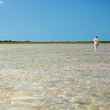





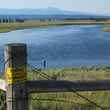
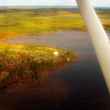



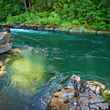




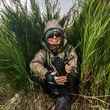
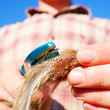



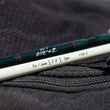




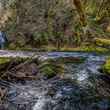
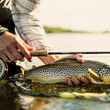
Comments